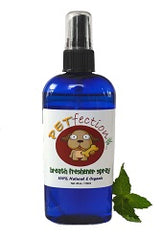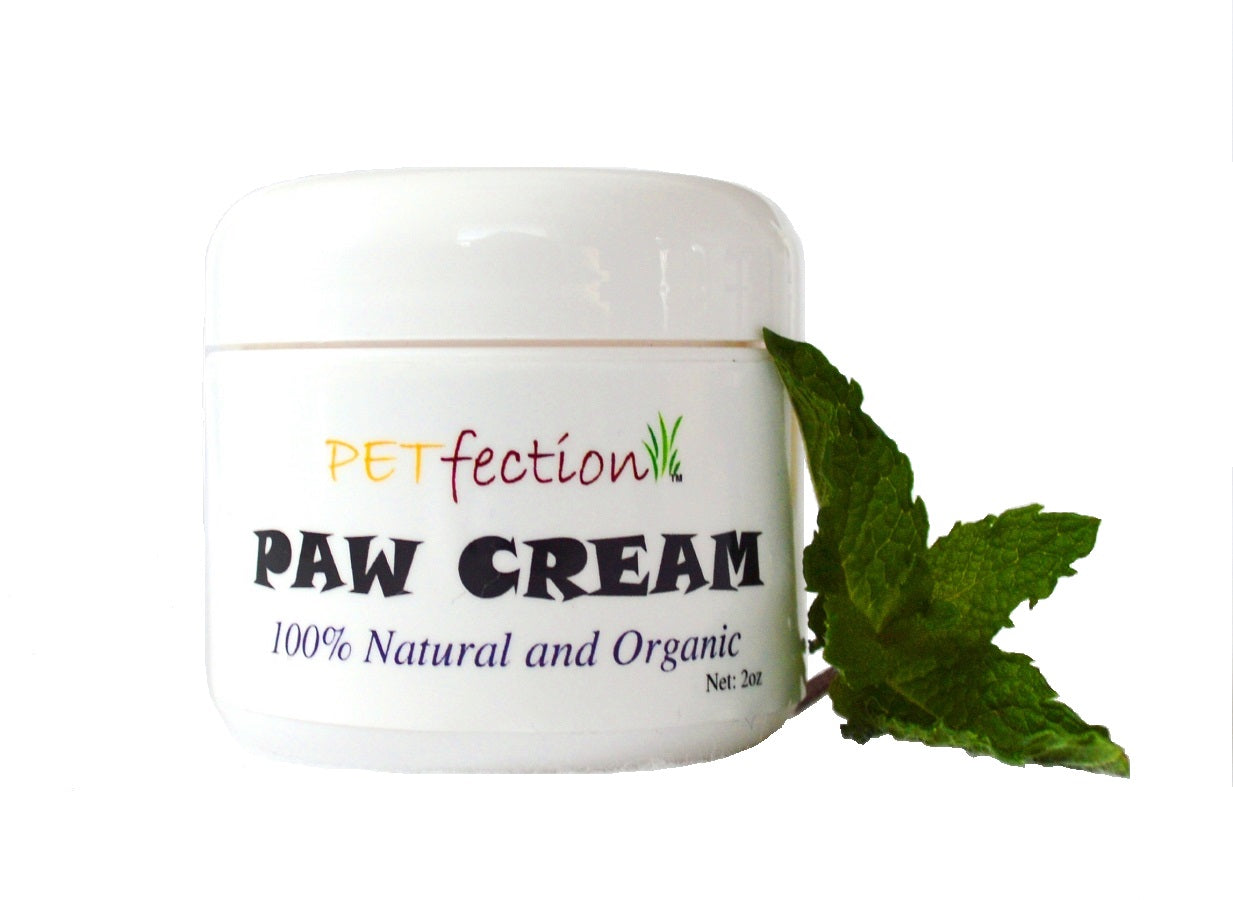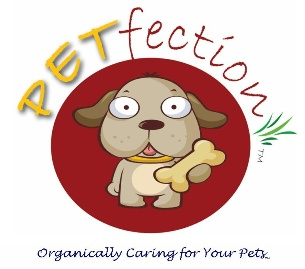WOW it has been 10 years since I started PETfection! It has been an awesome journey that I hope continues for many years.
I started this company with one thing in mind--- safe, chemical free products for dogs and cats. Back in 2007, I was living in Colorado working as a chemist making solutions for pharmaceutical companies. I had to work with dangerous chemicals in a clean room environment and absolutely hated how bad they could be. Wearing respirators to work with ingredients that are found in toothpaste and ice cream really made me start paying attention to ingredients in my products!
My passion for dogs and cats goes back to when I was little, but more specifically to when I was 14 and thought I wanted to be a veterinarian. From volunteering at the vet hospital to eventually working there for a number of years, I learned I truly want the best for our beloved furry friends.
In 2007 Natural products for pets were just starting to emerge, let alone, Organic. Today there has been a huge shift towards more natural and more organic options for our family pets. Although it is awesome that consumers now have more safe choices, it can still be a tedious task to scan ingredient labels to make sure the product is full of natural or organic ingredients, and not just one or two mixed in with standard chemicals.
My first product was Paw Cream. My goal when creating it was to have every ingredient in it be non-toxic, pure, organic if possible, and effective at treating the specific ailment of healing and protecting dry paw pads, noses, elbows, and any other dry spot on the body. I wanted a customer to be able to read the label on the jar and understand the ingredients and pronounce them! With every product created my goal has stayed the same. I work with very reputable companies for my supplies and make sure the ingredients are sourced correctly and have analyses done of them. I am a believer in the effectiveness of essential oils, but I steer clear of certain ones that are either shown to be toxic to dogs/cats or show conflicting info on toxicity. The same goes for all the therapeutic healing oils used and every other ingredient in PETfection products. Every ingredient has been specifically researched and sought out to use for it's healing properties and for its non-toxicity.
PETfection products exist because of all the friends, family, and unknown customers who have been willing to give these products a try and reach for something better for their own four legged animal. I truly thank each and every person known and unknown who has supported this business! At the end of the day I want dogs and cats to be healthy and happy. I am in this for them and am SO grateful for the last 10 years.
-Sheena Michels 1/29/2017 (creator & owner)

Reading the labels on your pet's food is a great habit to get into. Scanning the ingredient list can tell you a lot about what your pet is consuming, but one thing it can't tell you is the amount of Carbohydrates. Carbs are the sugars and starches that make up a food and are the energy source your pet needs.
Everyone knows eating too many carbs can lead to weight gain in people. The same is true for pets. When you read your pet’s food bag you will see a percentage breakdown of protein, fat, fiber, minerals (sometimes called Ash) and moisture, but no Carbs!
The importance of knowing the percentage of carbs in your pet’s food is to help stave off further weight gain in overweight pets, help prevent obesity in pets naturally prone to it (for example pugs, bulldogs, and beagles), and help decrease the risk of diabetes. With a lower percentage of carbs in your pet’s food, your pet can lose body fat and become less insulin resistant. So if you have a pudgy pooch, chubby cat, or diabetic prone pet, definitely pay close attention! We are going to show you how to figure out the percentage of carbohydrates in your pets food.
For example purposes, here is a breakdown of percentages off a bag of dry dog food:
Crude Protein – 24%
Crude Fat – 15%
Crude Fiber – 4%
Moisture – 10%
*Minerals/Ash generally constitute for about 8% of food weight.
If you look at the percentage breakdown of protein, fat, fiber, minerals, and moisture on the bag, you can add them all up and see they won’t equal 100%. This is because of the moisture content. Having 10% moisture in food means the bag actually contains 90% food. To figure out the “correct” percentages of protein, fat, and fiber, you have to divide each of the percentages on our example bag by 90%.
In our case Protein is: 24% divided by 90%, which is 26.6% of protein weight
Fat is: 15% divided by 90%, which is 16.6% of fat weight
Fiber is 4% divided by 90%, which is 4.4% of fiber weight
Now that we have your correct percentages, we can calculate Carbs!!
Carbohydrates = 100% - Protein – Fat – Fiber – Minerals/Ash
In our example, Carbohydrates = 100% - 26.6% - 16.6% - 4.4% - 8%
Carbohydrates = 44.4%
You can do this calculation with multiple brands of pet food until you get a low carb percentage. Go ahead and pull out your pet’s food bag! Do the calculation and see how low the carb percentage is. 30% is usually the lowest you’ll find in a dry food.
If you still have questions or have a hard time calculating the carbs in your pet's food, please contact us and we'll be happy to help!
It is no surprise there are millions of dogs that suffer from anxiety and nervousness. According to the Cummings School of Vet Medicine at Tufts University, almost 20% of the nation's 80 million dogs suffer! Anything from a thunderstorm and fireworks, to garbage trucks and jackhammers can set dogs off. Behaviors can include barking, pacing, panting, hiding, and shaking. Symptoms generally start showing up between 1-3 years of age or can kick in later in life after years of being symptomless.
As a pet owner, it is always hard to deal with a dog that shows anxiety or nervousness. Working with a dog to overcome their behavior can be a daily, exhausting game. We are finding more and more people do not want to give their dog a tranquilizer from the vet to keep them calm. This is especially the case when the dog doesn’t show extreme anxiety or nervousness, but only minor or only in certain situations. With our Calming Spray, you can naturally put your dog at ease without worrying about knocking them out or making them loopy. Our spray works by the aroma; as the dog breathes in the relaxing oils it stimulates the brain to release neurochemicals to relax. Your dog won’t become real sleepy, but will instead chill out to a calm state. Customers report their dog will go from pacing back and forth and panting, to laying down in the living room. Others report their dog will stop shaking in their hiding spot and will seem more at ease (check out all of our reviews here).
The wonderful thing about our spray is you can use it virtually anywhere. We recommend spraying it onto the chest of the dog, their collar, or onto your hands and then rubbing it all over their snout. You can also spray it on their bed, crate, thundershirt, or “safe zone” without hurting them or the fabric/material. You can use this spray multiple times a day or just as needed. With the totally natural and organic, chemical-free formula you don’t have to worry about over use. Of course your dog can lick this spray too.
With the Fourth of July around the corner and thunderstorms already here, we hope you can give your anxiety prone dog some relief this year, and hopefully it will be with our Calming Spray!

February is Pet Dental Month. According to the American Pet Products Association, 54% of family members take care of their dogs dental health (compared to a veterinarian, a groomer, or someone else doing it). Most pet owners know their pets teeth should be cleaned, but don't necessarily do anything regularly.
Good dental health is very important; pets want their teeth just like we want our teeth! Imagine not brushing your teeth for days and years on end. All that grime and gunk builds up causing plaque to form, the gums to inflame and become sensitive, and the worst for pet owners--- bad breath!! Approximately 85% of cats and dogs have some form of periodontal or dental disease, and if left untreated can lead to kidney issues, heart troubles, and bloodstream infections.
There is nothing better than a professional veterinarian cleaning, but products can be used to help with breath and plaque on a regular basis. Our Breath Freshener Spray does more than freshening the breath; it will also help with gingivitis by reducing inflammation in the gums. The essential oils (hydrosols for cats) will help kill off bacteria that leads to bad breath and plaque buildup. It is easy to use on sensitive or senior dogs, and doesn't taste bad either!

We recommend using our spray in three different ways. One is to spray directly into the mouth and onto the teeth, two is to dump it on a cotton ball and wipe the teeth off... this will help remove buildup on the teeth, three is to stick a small child's (or babies) toothbrush directly into the spray solution, then lift the cheek to brush the teeth. Our spray is non-toxic so if you decide to add it to your pets water or spray it on a bone/chew toy, no worries that's OK too.
For pets with extremely bad breath or bad teeth, use our spray regularly, especially at the beginning. Start with two times a day and decrease as you see improvement. The number of sprays does not matter. Please make sure to purchase the corresponding spray for your pet! Cat's need the Cat Breath Freshener and dog's need the Dog Breath Freshener. If you have both a dog and cat, we recommend each of them having their own spray.
We hope these tidbits of information will give you the know-how and confidence to start taking care of your pets dental health. To learn more or read reviews click here.
Welcome the New Year and Your New Year's Resolution With Your Dog By Your Side!
5 easy resolution tips to share with your pooch:
1) Make it a Healthier New Year by committing to walking your dog at least once a day. The fresh air will do you and them wonders!
2) Commit to Quality Time with your pet. Spend 15 minutes each day fully concentrated on him/her. Play with an interactive toy, give them loves, talk, eat together, etc. They would rather have your full attention for a few minutes each day over semi-attention several times a day.
3) Decide to Go Green with your dog this year. Replace chemical cleaners with biodegradable ones. Purchase eco-friendly toys. Buy a hemp collar or leash. Use biodegradable poop bags. Switch to natural or holistic treats and food. Change to using organic shampoo over a chemical shampoo.
4) Natural Supplements for You and Your Dog. If you aren't currently taking supplements or vitamins, start to this year with the help of your dog. Say a Multi-Vitamin for yourself and a Hip Supplement for your dog? Or how about learning Canine Massage to improve their health without giving an oral item?
5) Include Your Pooch on a Trip. Any travel plans this year? See about taking your pet along too. Look for pet friendly hotels, go camping, take a canoe trip, or jet set off on a plane. It is easier now than ever to take your favorite furry friend along!
Remember, resolutions don't have to be hard or time consuming. Take small chunks each day to work on your resolution; it will compound into a full year's worth of gratitude and bonding for you and your dog!!

With the line of holidays coming up, Halloween, Thanksgiving, Christmas, New Years, and Valentine's Day, it's easy to forget how they may negatively impact your pet.
The first holiday havoc to think about is FOOD. From Halloween chocolates to Christmas fruit cake, it's easy for your pet to pig out on something they shouldn't be. Give yourself a reminder on what foods are unsafe for pets so they'll be fresh in your brain when the sweets are out, and just because something isn't on the list doesn't mean it's ok! If anything, keeping food away from your pet will help them from gaining extra winter weight.
A second havoc is holiday PLANTS. Did you know there are almost 400 plants that are toxic to dogs and cats? With a huge list it is easy to become overwhelmed, so let's focus on the top holiday plants. Make sure to keep your Amaryllis, Poinsettia, Mistletoe, and Holly out of fido or fluffy's reach, and keep Pine Needles swept or vacuumed up regularly.
The third havoc is holiday DECORATIONS. It's fun to decorate the house and yard for the different holidays, but be sure there isn't anything your pet can get tangled in, electrocuted by, cut by, or anything for them to find as a nice snack. Ribbons, spider webs, tinsel, and wrapping paper are easy for your pet to ingest so clean up well and make sure they are hung up high. Holiday lights can also be tempting for pets to chew on so try and keep the cords protected or hidden. Any glass or sharp decorations should also be put up high and not in a place your pet can knock them over and then walk through.
Holiday havoc number four is LOUD NOISES. New Year's fireworks, screaming Halloween heads, and Christmas cracker poppers can startle your pet and send them running to hide. If your pet has issues with loud noises, keep them out of the room before the festivities start. We offer Calming Spray to help with anxiety and nervousness. The last thing you want is to deal with a stressed out pet right in the middle of your celebration.
Our fifth havoc is holiday TRAVEL. While airlines and hotels are becoming more pet friendly, traveling with your pet or leaving them at home/in a kennel can pull on their emotional strings. Sure not all pets mind when you leave them, but many can become anxious, depressed, or destructive. If they will not be staying at someone's house who will give them them the attention and the exercise they need, look for a reputable boarding kennel in your area. Some kennels take dogs on walks, spend the night with them, have cat play rooms, and even provide in home pet sitting. Check out petsitters.org, care.com, or sittercity.com for in-home pet sitters. Also here some good questions to ask at your local boarding facility to make sure they will be a good fit.
Last, but not least, plan ahead and have your vets number on hand, poison control's number on hand, and know where the closest emergency vet office is just in case something happens.
Hopefully we these tips all of your upcoming holidays will be filled with cheer and happiness for you and your pet!

Hey all you hunters out there!
It's your favorite time of year! Your dogs too, but with today's lavish lifestyle for pups the wilderness can mean more then reconnecting with their ancestral instincts. With plush carpet, comfy couches, and their own bed with pillows, modern day dogs have pampered paws. If your dog is coming home with dry sore paw pads reach for Paw Cream for relief.
It was designed for hunting dogs originally and has all natural and organic healing properties to moisturize, soothe, & reduce inflammation in pads and toes. It is safe to lick, smells great, and is easy to throw in your bag. A little massage of this into your pooches paws after a long day in the field or woods and they will be ready to go for round two!

Allergies = Boo! Prevention & Treatment are key for your pet.






